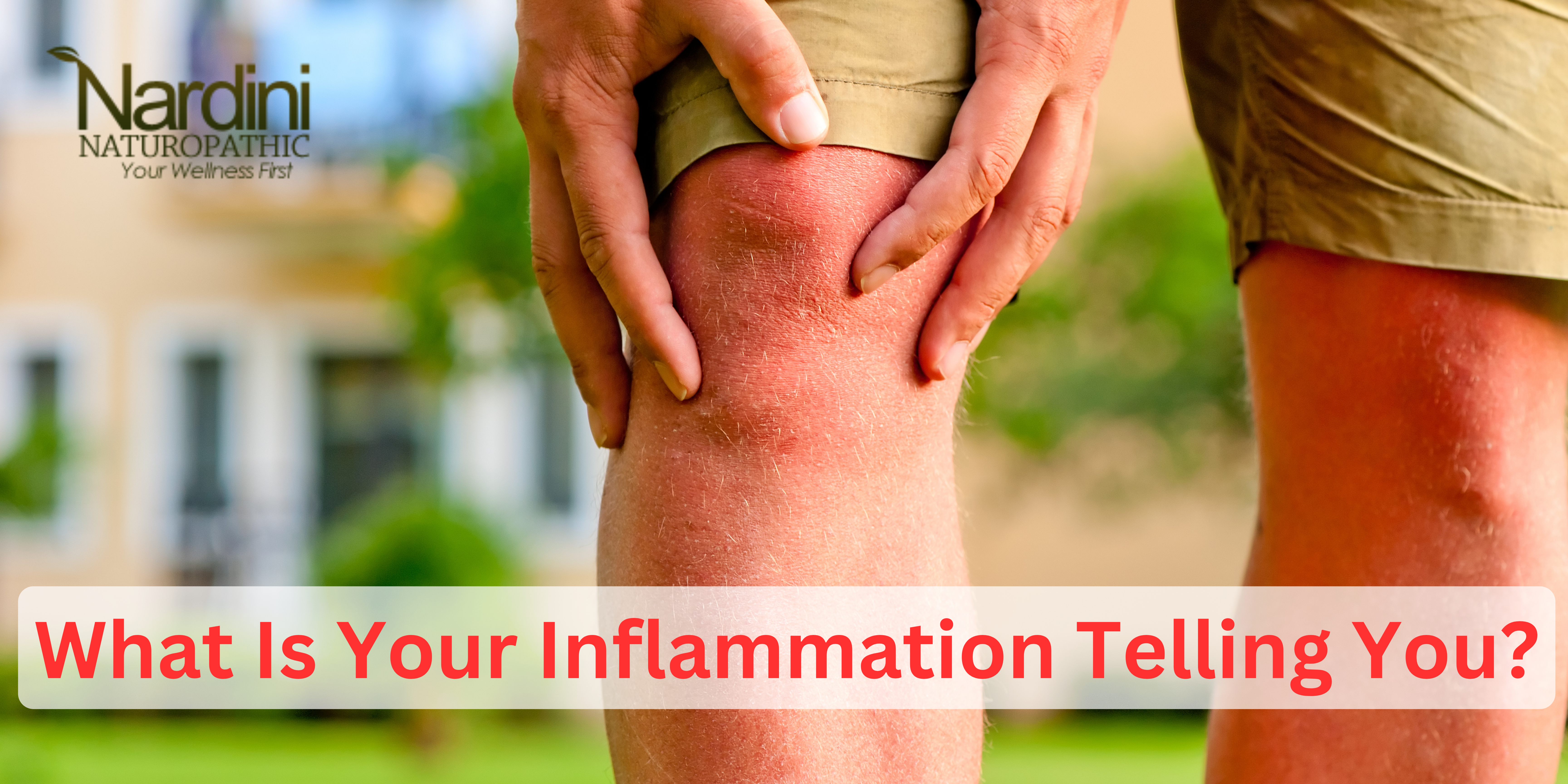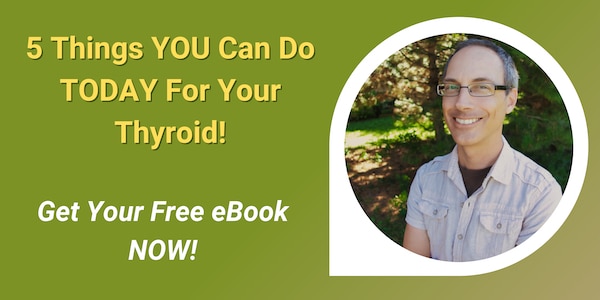We hear a lot about inflammation these days. Especially within alternative healing circles, we are sometimes told that inflammation is the root of disease, and we should do everything we can to stop it.
Many chronic health conditions, including asthma, allergies, eczema, arthritis, diabetes, cardiovascular disease, inflammatory bowel disease, and thyroiditis, have inflammation as their hallmark.
When your condition’s associated inflammation gets worse, you feel more intense symptoms. So, the understandable thing to do is to try to douse the flames of inflammation to reduce the intensity of the symptoms.
There are many anti-inflammatory medications on the market that can do this. Aspirin, ibuprofen, and corticosteroids are examples of pharmaceutical anti-inflammatories.
There are also many non-pharmaceutical remedies, extracted from herbs or other natural substances, which reduce inflammation, often with fewer side effects than the pharma alternatives.
Either way, is that the best strategy to address the issue – to suppress the inflammation? Is that dealing with the problem or just kicking the can down the road, so-to-speak?
Maybe the inflammation serves a purpose.
What if the inflammation is your body’s way of trying to tell you something? Perhaps, it is just part of the healing process.
Let’s take a dive into what inflammation is and how we should handle the message it’s sending us.
What is Inflammation?
If something ends in “-itis” it means that it’s an inflammatory condition. For example, “dermatitis” is inflammation (-itis) of the skin (derma is the Greek word for skin).
The name of the condition only tells you that there is inflammation and where it is in the body. It tells you nothing about what causes the inflammation.
Inflammation is characterized by 5 hallmark signs and symptoms1:
- Pain
- Swelling
- Redness/Discolouration
- Heat
- Loss of Function
These elements will be at various levels of intensity depending on the individual and the situation.
The inflammatory process involves the release of chemicals in the body that mediate the inflammation. One example is histamine, which triggers fluid release and swelling at the site. Another is a class of chemicals called cytokines that recruit white blood cells to the area of damage to affect repairs2.
Based on the time involved, inflammation can be separated into 2 types – acute and chronic.
Acute inflammation usually has a quick onset, due to an injury or exposure to a toxin, like wasp venom, for example. Inflammatory cells rush to the site of injury and commence healing. It is self-limiting – once the injury is repaired or the toxin removed, the inflammation resolves. This process can last minutes to months, depending on the extent of damage.
Chronic inflammation generally lasts much longer. It can come about because of an injury that never fully heals or it may appear to “come out of nowhere”. This ongoing inflammation is associated with conditions like allergies, arthritis, cardiovascular disease, diabetes, autoimmune conditions, and many more. It is like acute inflammation, except that it never resolves.
When the inflammation affects a specific area of the body, like a joint in the case of arthritis, it’s easy to spot.
Sometimes, the symptoms of chronic inflammation can be relatively mild and subtle, like headache, low-grade fever, and fatigue. This can make it harder to figure out where the inflammation is coming from.
The main question, though, is: why doesn’t the chronic inflammation resolve?
To answer that question, let’s look at what causes chronic inflammation.
What Causes Inflammation?
Essentially, inflammation is healing.
However, sometimes the healing process never resolves and the associated signs and symptoms of inflammation, like pain, swelling, and reduced function, never go away completely.
This chronic inflammation may be due to an injury that never properly heals. Perhaps the injury is so severe that healing has never fully completed, or the area of damage continues to be reinjured. Maybe the body is not being given the nutrients that it needs to complete repairs.
In other cases, the chronic inflammation may be caused by a toxic burden in the body and its attempts to rid itself of the toxins.
We’re continually exposed to chemical toxins from the air, food, water, and commercial products that we consume. Pharmaceutical medications and electromagnetic frequencies, like those from cell phones and WiFi, may also cause damage to the body’s tissues.
Sometimes, especially, when a person’s digestion is not working optimally, foods can act as toxic, pro-inflammatory substances. Gluten, dairy, and nightshade vegetables (tomatoes, potatoes, peppers, eggplant and others) are examples of foods that often fall into this category.
These ongoing exposures, as well as previous exposures that aren’t properly dealt with, can create a state of chronic inflammation.
So, when we have symptoms of inflammation like pain, itching, redness, fatigue, and headaches, does it sound like a good idea to just suppress the symptoms and call it a night?
Maybe the inflammation is trying to tell us that there is ongoing damage occurring in the body and it’s time to deal with it.
The healing process might need some help!
Strategies to Handle Inflammation and Its Root Cause
1. Reduce Toxic Exposure
Before you can start reversing the chronic inflammation in the body, it’s necessary to stop creating it. The inflammation is being created by repeatedly subjecting the body to injury and insult, in the form of exposure to various toxins.
The continual toxic exposure creates oxidative stress in the body which leads to tissue damage, followed by inflammation3.
It’s a pretty tall order to eliminate all exposure to toxins, but significantly reducing it is quite achievable. To do that, it’s important to first know where the toxicity is coming from.
Some examples of toxins that can trigger inflammation include:
- Pesticides and chemical additives in food and water
- Chemicals in the air from pollution and aerial spraying
- Chemicals present in household cleaning and personal care products
- Electromagnetic frequencies (EMFs), including those from cellular phones and WiFi
- Pharmaceutical medications
- Naturally occurring toxins present in the soil and ground water (like arsenic) and in certain plants (like the alkaloids in nightshade vegetables, casein in dairy, and gluten in wheat and other grains)
- Stress
Thankfully, reducing your exposure to some chemicals is straight forward.
Stick to organic and whole foods as much as possible. Drink clean and filtered water. Use simple and natural cleaners and personal care products.
Reduce your exposure to EMFs by keeping your phone off when not in use and at least an arms-length away when it is on.
Use pharmaceutical medications only when necessary. Having a protein snack, a glass of water with lemon, and a few minutes of deep breathing can often do the trick for a common headache.
Find out if you are sensitive to naturally occurring chemical triggers in foods. This can be done by a dietary elimination method or sometimes with food sensitivity testing.
And don’t forget to minimize your stress by re-evaluating potentially toxic relationships and not taking on too much.
2. Detoxify
Once you have identified the factors that are triggering your inflammation and have reduced or eliminated each of them from your life, it’s vital to flush out the toxins that have already accumulated in the body.
“Detox” can mean doing short, regular cleansing programs. It can also refer to an ongoing effort by the body to remove toxins.
Consider natural remedies that engage the detoxification organs of the body, like the liver, kidneys, colon, and lymphatic system. Milk Thistle and dandelion root support the detox action of the liver, for example. Fibre sources, like ground flax seed and psyllium husks, are often helpful to move out the toxins that your liver is eliminating into the digestive tract.
Antioxidants are a class of nutrients that help improve the detox process in the short- and long-term. L cysteine, Vitamin C, zinc, and manganese are examples of nutrients required for the body’s antioxidant enzymes which help to minimize the damaging effects of chronic inflammation.
Some herbs, like turmeric, frankincense, and ginger, work as antioxidants and can help balance out some of the inflammatory chemicals known as prostaglandins4. They are helpful for managing the chronic inflammation as it resolves but should not be used as just a natural substitute for pharmaceutical pain-killers.
Removing as many of the inflammatory triggers as possible will help the body to heal and reduce the need for more inflammation.
3. Replenish Nutrients
Continual exposure to toxins and the chronic inflammation that results from it will take its toll on the body. This includes using up our reserves of antioxidants and other nutrients important to health.
Stress and other toxins that weaken digestion can also lead to deficiencies in various nutrients.
The antioxidants tend to get used up first. Vitamins C, E, and A are examples of vitamins with antioxidant properties that are commonly suboptimal5. Selenium, zinc, and manganese are minerals that support the antioxidant enzymes and should be replenished when needed.
If your stomach acid is low, iron and Vitamin B12 can quickly become deficient. If you are suffering from chronic inflammation, make sure to check your levels of these oft-forgotten nutrients.
Chronic inflammation in the thyroid, breast tissue, and ovaries may lead to problems with their uptake of iodine, a nutrient that is critical to the healthy function of these organs. Kelp, eggs, and seafood are good sources of iodine.
The body also needs amino acids from protein to repair mucous membranes damaged by chronic inflammation. Healthy protein sources include collagen, from meat and bone broth; pumpkin seeds; hemp seeds; fermented soy; lentils; and spirulina.
This is not an exhaustive list, and everyone may have different nutritional needs when dealing with chronic inflammation.
4. Maintain
Once the underlying causes of the inflammation are identified and eliminated, the next step is to prevent recurrence. Fortunately, prevention of a problem is easier than treating it after the fact. Healthy lifestyle choices play a huge role here!
Eat a wide variety of whole or minimally processed foods and move as close as you can to 100% organic. If you have identified any sensitivities or allergies to foods that you have, avoid the culprits until the digestive system is fully healed and ready to digest them again.
Avoid conventional cleaning products – often vinegar and baking soda does the trick! Read ingredients on personal care products as they can be loaded with pro-inflammatory chemicals.
Use wired internet instead of WiFi when possible and keep your cell phone use to only what is necessary.
Manage stress with physical exercise, meditation, and breathing techniques.
Sometimes chronic inflammatory conditions must be managed with conventional medical treatments. However, the goal should always be to address the underlying cause of the inflammation rather than just suppressing the symptoms.
Consider chronic inflammation to be the warning sign that it is and not something to be beaten down at all costs. It’s merely your body at work trying to heal itself.
Sometimes, it just needs a little help in the process!
- https://www.ncbi.nlm.nih.gov/pmc/articles/PMC1074343/#:~:text=Based%20on%20visual%20observation%2C%20the,of%20function%20(functio%20laesa)
- https://www.ncbi.nlm.nih.gov/pmc/articles/PMC2785020/
- https://www.ncbi.nlm.nih.gov/pmc/articles/PMC5551541/#:~:text=Abstract,to%20detoxify%20these%20reactive%20products.
- https://pubmed.ncbi.nlm.nih.gov/16117603/
- https://www.mayoclinic.org/drugs-supplements-vitamin-a/art-20365945#:~:text=Vitamin%20A%20also%20has%20antioxidant,disease%2C%20cancer%20and%20other%20diseases.
Book An Appointment With Nardini Naturopathic
Are you interested in dealing with chronic inflammation and finding out if you have a nutrient deficiency?
Or perhaps you’d like a review of your overall diet to see where you could be doing better.
Maybe you have food allergies or intolerances and worry you aren’t getting enough nutrients because of your restricted diet.
I’m Dr. Pat Nardini, a naturopathic doctor who offers nutritional counseling services to help ensure all of those gaps in your diet are filled, and that you’re getting enough of all the important nutrients which your body needs to function at its best.
Contact me today for more information, or book a free 15-minute consultation where I will help you understand how naturopathic medicine can help you.
If you have questions about naturopathic medicine, or you’d like to take your first step into the world of naturopathy, contact us at Nardini Naturopathic, and let’s book an appointment.
Yours in health,
Dr. Pat Nardini, Naturopathic Doctor
320 Danforth Ave suite 206,
Toronto, ON, M4K 1N8
-https://g.page/NardiniNaturopathicDanforth
Dr. Pat Nardini, ND is a licensed doctor of naturopathic medicine in Toronto, Ontario. He offers science based natural health solutions with a special focus on thyroid conditions.


